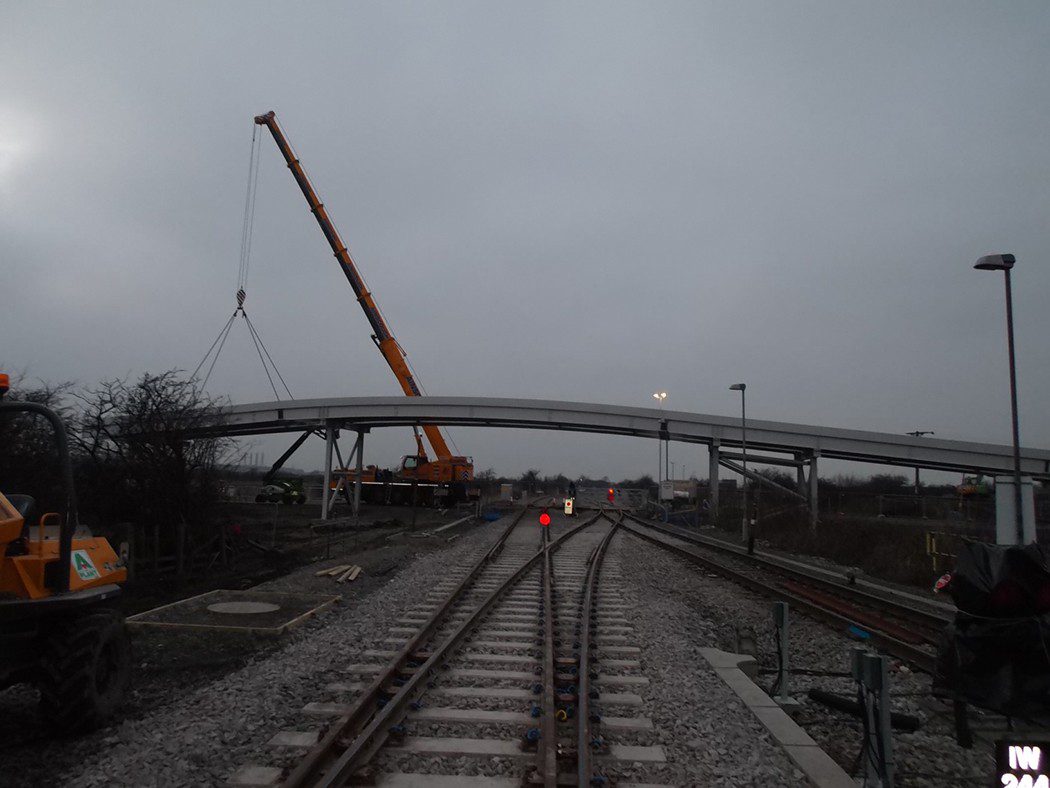
Forward Planning Prevents Problems
Associated British Ports (ABP) is leading the multi-million-pounds development of the Immingham Renewable Fuels Terminal (IRFT), the world’s largest biomass handling facility.
However, the length of trains required to service the facility meant that a creative solution was needed to ensure traffic flow at the unmanned level crossing in the nearby Marsh Lane area, could continue unimpeded. The crossing falls within the marshalling yard created as part of the IRFT development.
HBPW Managing Partner, Paul Withers, said: “Some of these trains can be exceptionally long which can cause problems for vehicular and pedestrian traffic if they are stationary too long so, working on the basis that prevention is better than cure, it was decided to build an over-bridge and we were asked to design the structure and its foundations, with Graham Construction leading the build.”

Over Bridge Taking Shape
However, it was not as simple as other projects the firm has worked on.
“We developed a structurally continuous steel and concrete composite bridge with very high containment parapets over the railway which may appear relatively straight forward at first viewing, however, our design also had to meet the additional challenges of underground gas caverns, built to house natural gas, as well as the presence of Cathodic Protection Currents (CPC) in the ground.
“On the one hand we did not want to locate piles that might penetrate the gas caverns any more than we wanted sacrificial anodes jeopardising our structures.
“CPCs are a technique used by oil refineries to stop pipes from corroding. Cathodic Protection Currents – a type of electric charge – are transmitted through pipes and also feature sacrificial anodes which, over time, dissolve, leaving the pipes intact. However, we had to be mindful of the corrosive effects of the CPCs and how they might adversely affect our structures.
“It is a rare day when a job is without challenge, however, I am pleased to say that a workable solution was devised to meet all needs.”
HBPW has also undertaken the civil engineering design of the IRFT, one of its largest ever contracts, which Graham’s is also constructing.

Burning The Midnight Oil

